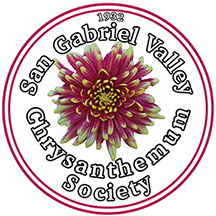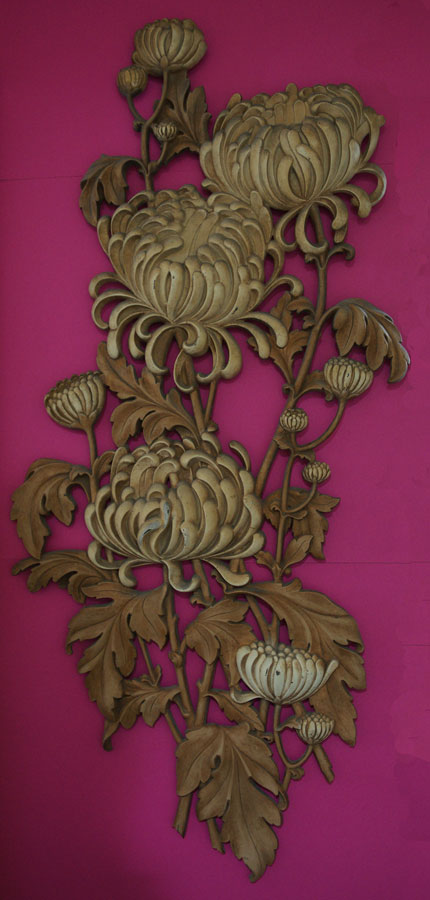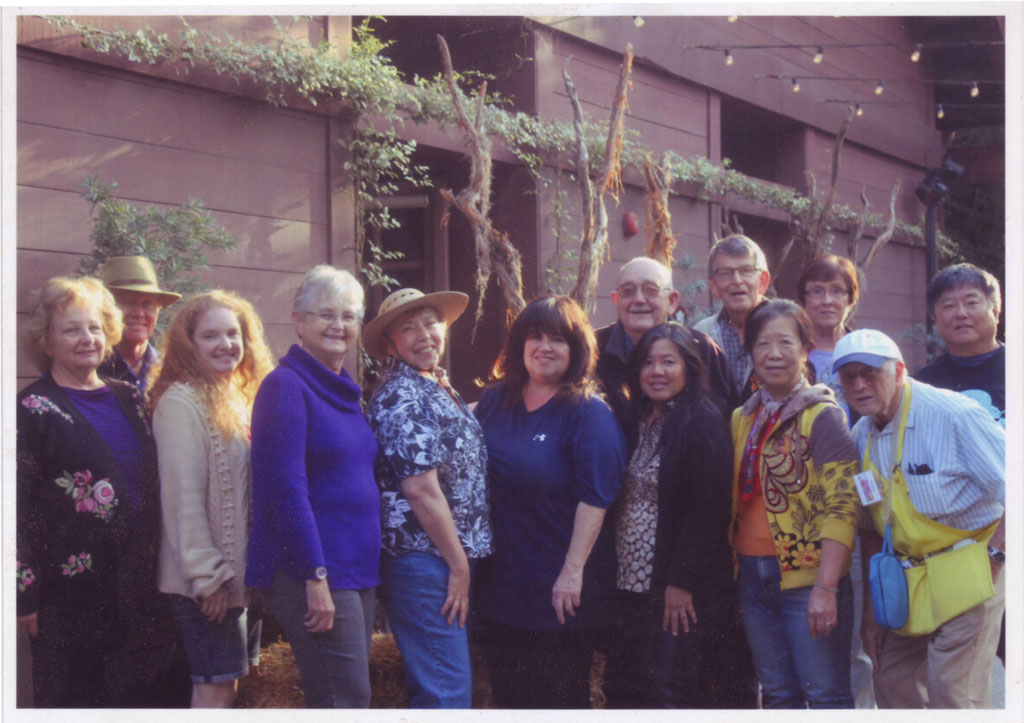
Visitors are always welcome at our meetings.

2014

We sell rooted mum cuttings at our Arboretum Spring Plant Sale. Find out more about growing chrysanthemums at the National Chrysanthemum Society site: www.mums.org
Visitors are welcome at our monthly meetings at 6:30 p.m. Check our Facebook page. You can email us at:
belvedere7@verizon.net
if you have any questions.
Chrysanthemums can be a wonderful addition to your landscape and are considered the queen of fall flowers. They provide great cut flowers and can be grown in many ways, from mounds with many blossoms to large, disbudded show types. The Descanso Chrysanthemum Society strives to teach the best growing techniques, and we encourage you to join us. The following are basic growing techniques for chrysanthemums.
- Chrysanthemums prefer and do their best in a location which has full sun. You can have good results with as little as 5 hours of sunlight a day. Filtered or light shade in the afternoon is beneficial.
- Avoid streetlights, porch lights, and car lights shining on your show mums. Unwanted light at night will cause your buds to set late or not bloom at all, as mums mature in the dark.
- Chrysanthemums prefer good drainage and do not like extreme moisture. Growing mums in pots or raised beds will help with poor drainage. Most of our members grow in pots. For chrysanthemums grown in pots, keep them moist and water three to four times a week or daily during high temperatures. For chrysanthemums in the ground, water two-to-three times a week. Water early in the day and avoid watering in the hottest part of the day, as it can severely damage your plants. If you choose to water late in the afternoon, do so before sunset to avoid wet foliage at night. Use mulches to help keep plants from drying out, cool the soil, and keep down weed growth.
- Chrysanthemums should be planted in an area with no competition from trees, shrubbery, and other plantings. Virtually any type of garden soil is fine, but heavy clay soils should be amended with peat moss and other organic materials. Alfalfa pellets or alfalfa meal add both organic material and nutrients. Aged manure is also a good addition to the soil.
- Chrysanthemums do their best when a balanced plant food is used. You have your choice of organic or inorganic plant foods. Organic plant foods such as bone meal, manures, leaf mold, compost, dried blood meal, and alfalfa all work well. Inorganic chemical-based fertilizers such as 10-10-10 or 16-16-16 also work well. You can find water-soluble fertilizer. These are mixed with water and used as either a foliar feed or on the ground. Bagged fertilizers, as well as additions of superphosphate, dolomite lime, or gypsum are also beneficial.
- The three most important numbers and elements you should know about fertilizers are listed on the product’s label. All plant foods, whether organic or inorganic, will list the makeup of the fertilizer. An example is a bag of 5-10-10 fertilizer. The first number (5) represents nitrogen, which promotes rapid growth and deep green color. The second number (10) represents phosphorus, which promotes root growth and ripening of stems. The third number (10) stands for potassium or potash, which promotes sturdy green growth and hard, ripe wood. Descanso Chrysanthemum Society members can tell you which fertiliozer to use at different times during the chrysanthemum growth period.
- Disease and insect control is a must. Whether you use organic or chemical control is up to you. Most growers choose a middle-of-the-road program using chemical and organic products. Ask a member for suggestions to help identify your specific pest or disease problems. Our common goal is to control and prevent problems before they start. Common diseases are mildew and virus-type diseases. Chemical and organic controls are available.
- The most common insects to be controlled are aphids (black to green in color), worms (green caterpillar cabbage looper), spider mites, leaf miners, slugs, and snails. Most members use snail and sluig bait and rotate the use of several brands of pesticides. Spraying your plants with plain water helps with aphid control.
- Most show chrysanthemums will require staking, as many are tall growers. Members of the Descanso Chrysanthemum Society grow large disbud show blooms displayed as single cut blooms in a vase or in the container in which they are grown. Other types of mums grown include bushes, trees, cascades, bonsai, Fukusuke, and sprays.

Descanso Chrysanthemum Society meets on the third Monday of each month in the Oak Room at the Los Angeles Arboretum and Botanical Garden, 301 North Baldwin Avenue, Arcadia, CA 91007. Meetings start at 7PM.
